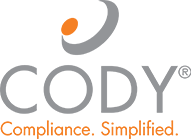How to be a Rising Star—What Ratings Mean and How to Improve Them
It’s no secret that Star Ratings can have a significant impact on a health plan’s membership and bottom line. As competition increases, it’s essential to have strategies in place to elevate or maintain a 4+ star rating.
The Centers for Medicare and Medicaid Services (CMS) recently released Highlights of Contract Performance in 2021 Star Ratings. CMS awards Star Ratings to Medicare health insurance plans on a five-point scale “based on various quality metrics related to plan features and benefits” as described in this fact sheet, with five stars being the highest rating. Star Ratings are important for plans for a variety of reasons:
- Promotional Opportunities—Star Ratings used in plans’ marketing materials as a competitive advantage help attract new and retain current plan members and maintain and expand market share.
- Special Enrollment Incentives—CMS allows Five-Star plans the ability to take advantage of a special enrollment period outside of the traditional Annual Election Period. “If a Medicare Advantage Plan, Medicare drug plan, or Medicare Cost Plan with a 5-star rating is available in your area, you can use the 5-star Special Enrollment Period to switch from your current Medicare plan to a Medicare plan with a “5-star” quality rating. You can use this Special Enrollment Period only once between December 8 and November 30” as stated in this CMS web page.
- Federal Bonus Incentives—An article from Healthcare Finance News notes that: “Star ratings reflect a plan’s performance and are related to quality bonus payments.” Plans that achieve high ratings earn these bonuses.
While CMS announced some COVID-19 relief for the 2022 Star Ratings, plans cannot afford to be complacent or relax measures regarding their continuous improvement. To maximize efforts to improve member satisfaction and operational effectiveness, both of which help increase Star Ratings, here are a few strategies to consider:
- Automate the Collateral Creation Process—Finalize government-mandated member materials (ANOCs and EOCs) early. Use automation to ensure a smooth creation process thereby reducing the risk of errors, penalties, errata mailings, and most importantly, accurately communicate with your members.
- Centralize your ‘Source of Truth’—Start with the data coming directly from the Health Plan Management System (HPMS) bid submissions and automate the process from there. This saves time in both the development of the plan benefit table and final documents, thus producing more accurate output compared to manual data entry.
- Mitigate the Risk of Critical HPMS Memos—Using an automated process to manage memo intake, distribution, review, response, and reporting will help reduce the chance of missed updates, actions, or deadlines that would impact Star Ratings negatively.
- Conduct Mock Audits—Routine self-audits are strongly encouraged. However, a great way to fully prepare is to conduct practice audits with an external auditor to help identify and expose problematic or non-compliant areas, reduce risk, improve operations, and Star Ratings.
For health plans in search of a proven solution to support the maintenance or elevation of their Star Rating to 4+, CodySoft® offers a comprehensive suite of software modules designed specifically for Managed Care Organizations (MCOs) to increase efficiency, mitigate risk, and help ensure compliance.
About CODY: CODY® works with more than 60 government-funded, commercial, and ACA health plans across 45 states and Puerto Rico. We help health plans improve regulatory compliance, manage plan benefit data, and streamline member/provider communications to maximize performance across the enterprise. CodySoft®, our proprietary suite of software is specifically designed for health plans. www.codyconsulting.com.
